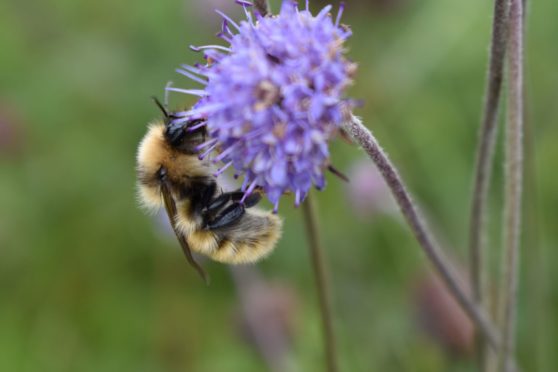People taking their holidays in north-west and islands this summer are being asked to help identify some of the last locations of one of the UK’s rarest bumblebees.
The scheme, led by the Bumblebee Conservation Trust, aims to pull the rare Great Yellow bumblebee back from the brink of extinction, by knowing how widespread it is in some of the most rural areas of the Highlands and Islands.
The conservation charity wants people to hunt in 28 specific grid references – each measuring six miles squared – between June and September, at sites ranging from Tiree, the Uists, Harris and Lewis, across Sutherland and Caithness on the mainland, to Orkney and Shetland.
The Great Yellow bumblebee, Bombus distinguendus, was found across the UK until the 1960s, but after suffering a massive decline is now only found in a few places in Scotland’s remote northwest in machair grasslands and other flower-rich areas on the north coast and some of the islands.
Because these areas are often remote and relatively uninhabited, the species is difficult to monitor – leaving experts uncertain about exactly where it still survives.
Katy Malone, Bumblebee Conservation Trust’s Scotland conservation officer said: “We need to know more about where the Great Yellow bumblebee is holding on, so we can take action to protect it before it’s too late. Anyone can get involved with this citizen science initiative to save a species.”
The Great Yellow is a large bumblebee entirely covered with golden-yellow hairs – apart from a black band across the thorax between the wing bases.
Ms Malone continued: “Because this iconic insect’s last havens are in some of the country’s most far-flung corners, we don’t have enough volunteers to find and record its whereabouts. So we’re asking people holidaying in the northwest Highlands and Islands this year – as well as those living in these beautiful places – to help.”
The Trust’s Great Big Great Yellow bumblebee Hunt begins this Saturday. It features 28 grid squares where the Great Yellow used to live, but which have not been checked in recent years.
A map with a full list of the grid squares is available on the Trust’s website bumblebeeconservation.org, with details of how to record sightings, tips to identify Great Yellows and other bumblebee species, and advice on visiting remote locations.
